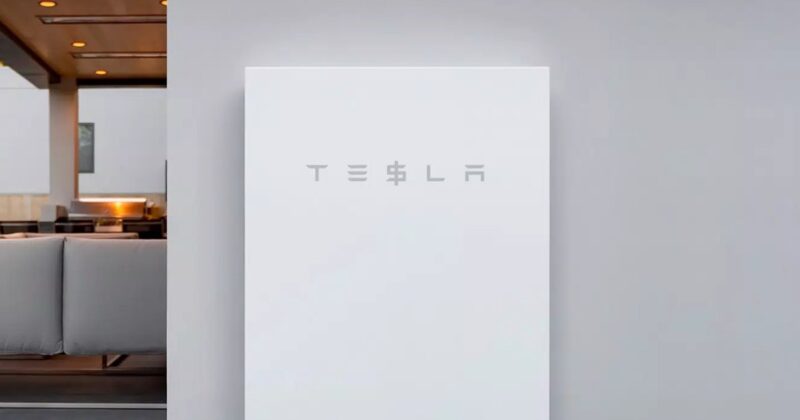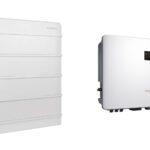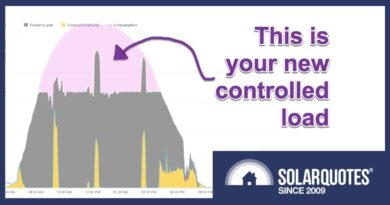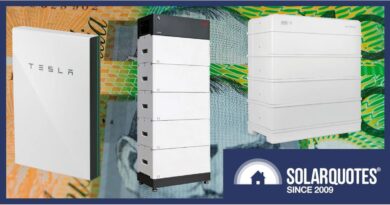Tesla Powerwall Alternatives Part 2: Hybrid Inverter Systems
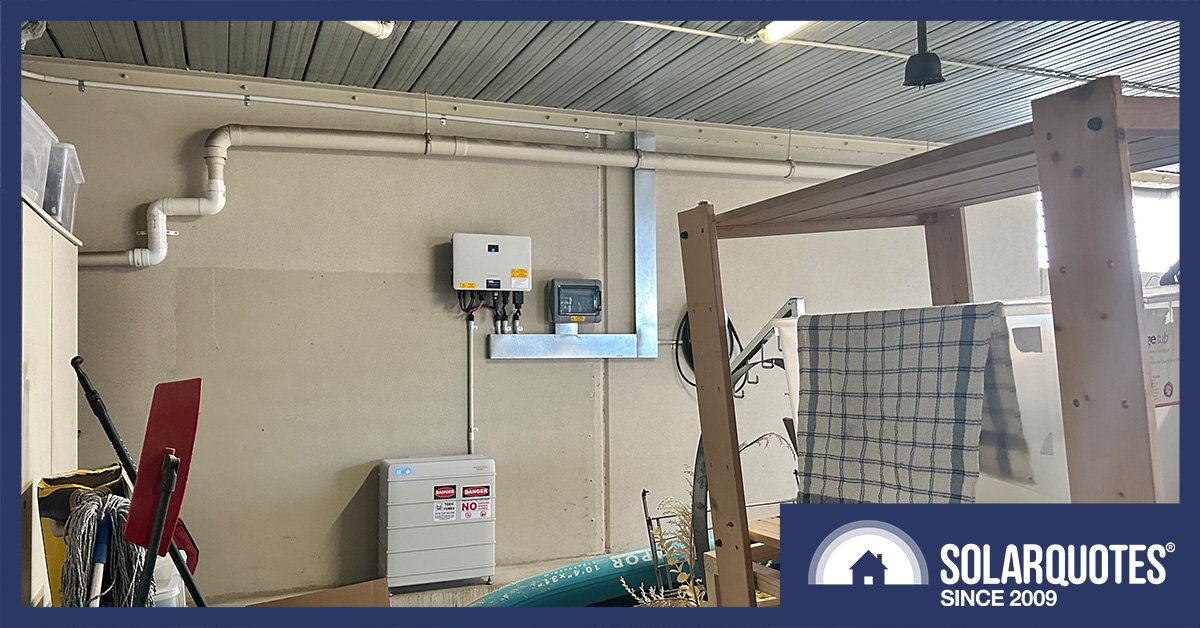
A Sungrow Hybrid Inverter connected to 6.6 kW of solar and 12.8 kWh of Sungrow batteries. And a dishcloth.
As a solar installer in Australia, I’ve looked at many Powerwall alternatives for residential battery storage systems. In this guide, I want to share my knowledge about using hybrid inverters for grid-connected solar battery systems.
Hybrid inverters are an alternative system design to ‘All-In-One’ battery units like the Powerwall. One of the best things about them is that they allow you to legally add more solar panels than your local electricity network usually permits. That’s a massive advantage in bureaucratic Australia, especially if you want to maximise your solar generation.
Hybrid solar/battery inverters manage solar power generation and battery storage in a single unit. It streamlines your solar setup, and if you’re buying solar and batteries together, it can save you money on hardware and installation.
Most of this post will give you the information you need to buy the right hybrid solar/battery system for your home. Buying a solar and battery system is much more involved than simply buying solar, and I want you to go in with your eyes wide open so that:
- you get the right-sized battery and hybrid inverter
- you get enough solar to charge that expensive battery all year round,
- you get your bills as low as possible
- your system backs up the appliances you need when the grid goes down
- your system can recharge from the sun in an extended outage
Towards the end, I’ll give a curated list of Hybrid-inverter powered Powerwall alternatives available in Australia.
Note: If you’re interested in a battery system that doesn’t require a hybrid inverter, you should check out my previous post, where I explore ‘All-In-One’ Powerwall alternatives. – where you get one main unit with its own integrated battery inverter that ‘AC Couples’ to existing solar systems as a simple retrofit.
Two Things You Need To Know Before Buying a Hybrid Battery System in Australia
Here are two links you should read before you start worrying about specific hardware:
Do The Maths
If your bills are too high despite already owning solar, there’s no point just throwing money at a battery and hoping that will fix your bills.
The new ‘solar cowboys’ on the block are now knocking on your door or posting you unsolicited mail implying that a bolt-on battery will cure all your energy ills. Just like the solar-panel cowboys, they can’t possibly make that claim without seeing your unique energy import and export data.
Before you spend thousands on a battery, you need to get a consumption meter, or look at the one you already own. It can show you the best way to invest your money, whether that’s more solar or batteries (or efficiency). A good installer can help here.
Better still, devices such as Solar Analytics can use your actual solar and consumption data to:
a) do the sums for you – advising on the best-sized battery for you and the annual savings it will give
b) choose the best retail electricity deal with or without that battery. As retail plans become more complicated with seasonally adjusted, super off-peak, off-peak, shoulder, peak and demand charges, this is becoming impossible with a back-of-the-envelope calculation.
If you have a vintage solar system without monitoring, your retail smart meter lets you access your ‘NEM12 data’. This data typically covers half-hourly meter readings for 12 months.
Look For Reliable Warrantors
If you want to knock yourself out with warranty fine print, my fellow blogger Ronald has got you covered with his deep dives into Sungrow warranties, the Powerwall warranty and many others. But as Ronald always advises – the organisation providing the warranty is more important than the warranty fine print. And that’s because the retailer must provide a reasonable warranty under Australian Consumer Law – no matter what the manufacturer writes in their warranty document. The organisation providing the warranty is the one that takes your money for the system – the solar retailer/installer. So choose your retailer/installer wisely.
Use The Same Inverter And Battery Manufacturer Where Possible
If possible, prioritise a hybrid with an in-house battery over other compatible models.
From my personal experience, I can share that when Victron replaced an entire model range of inverters under warranty, their relationship with LG Chem soured, and the warranty support for existing installations was left in limbo. This was the solar retailers’ problem, not the consumers’ problem – but it still caused headaches all round.
Interesting tidbit: I’ve been told Tesla dropped their ‘DC-coupled’ Powerwall 2 model because of the shit fights they had with third-party battery inverter manufacturers with the DC-coupled Powerwall 1. They settled on the AC-Coupled Powerwall 2 that could be retrofitted without any third-party inverter.
Hot Water Is A Battery Too
We mustn’t forget that hot water is a great way to store energy. Using your existing hot water as a solar battery can drastically reduce the size of the ‘real battery’ you’ll need.
I’m still a big fan of old-fashioned storage hot water systems. In many cases, it’s a battery you already own. With only an element and a thermostat, they are perfectly simple, there’s just one moving part, and unlike a heat pump, the whole system is covered by the same warranty without exclusions.
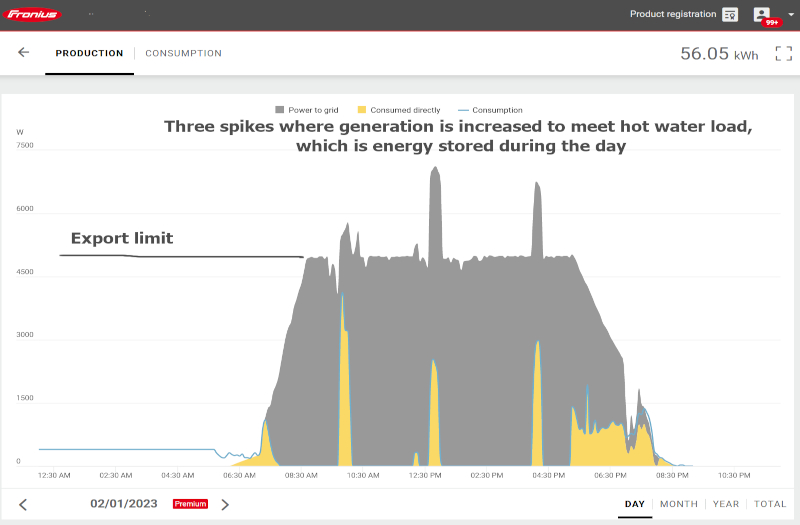
This system has a hard export limit. But when the hot water tank needs a boost, lots of solar is self-consumed – not exported – so the generation can go way over the export limit kW.
Adding a contactor to automate your hot water service often makes sense. Many solar inverters have relay outputs to divert solar yield, or you can have a Catch Power Diverter or Catch Power Relay for additional monitoring smarts, which is especially handy for legacy solar that doesn’t have an app.
It also makes good sense to overhaul the switchboard at the same time. In fact, many installations don’t have enough space to install the required gear. You may need to remove old mechanical meters and condense old two-pole or four-pole safety switches into single-pole units that offer greater redundancy.
Be Clear On What Will Be Backed Up
Of all the issues that cause me grief as an installer, I hate the awkward conversations about segregating the switchboard into essential and non-essential loads.
If you buy a cheap system *cough Alpha cough*, it will often have very little surge capacity to start a motor, like the one in your fridge or rainwater pump. In my opinion, one power circuit and some lights are all they’re really good for. I don’t care what the salespeople might have implied; I will not connect your cooktop or air conditioner because it will only end in tears.
Grid Hybrids Are Not Off Grid
An important thing to take from this article is that you must not confuse the terminology with the capability. Most hybrid solar inverters will offer some form of blackout protection in the event of a power cut, but getting through a few hours or a day or two doesn’t mean you can go “off-grid” in a meaningful way. Hybrids aren’t designed to deal with whole house loads and often have warranty exclusions if they’re operated for more than 20% of the time without the grid connected.
You must ensure your expectations are realistic for the budget and documented in the sales process. If you intend to “treat the grid with contempt”, you need a really well-built system. True off-grid energy independence isn’t cheap, but the grid is cheaper and more reliable than the generator you’ll need to have anyway.
You May Need More Solar
Without surplus, cheap energy, batteries don’t make much sense1.
The SolarQuotes Solar Calculator shows you the predicted generation for each month of the year. You can use this to quickly see if you have enough solar to fill your battery in the depths of winter.
For example, a friend with a 13kWh battery still had reasonably large winter bills. He had an 8kW east/west system and wanted to buy a second battery.
In 30 seconds, our calculator showed he can expect 47 kWh per day in January – more than enough for his 20 kWh daytime load plus battery recharge:
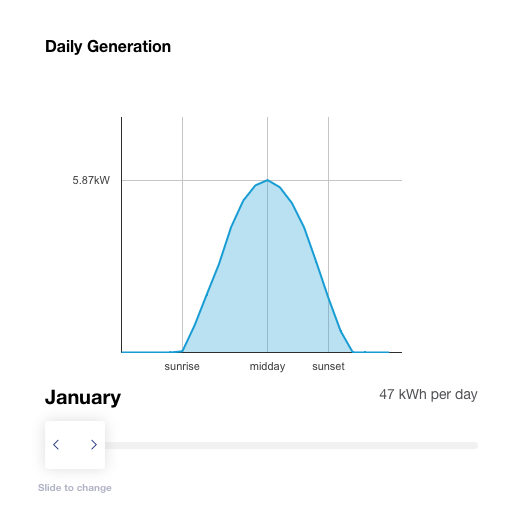
But in June, he’s going to struggle to put any energy in the battery at all:
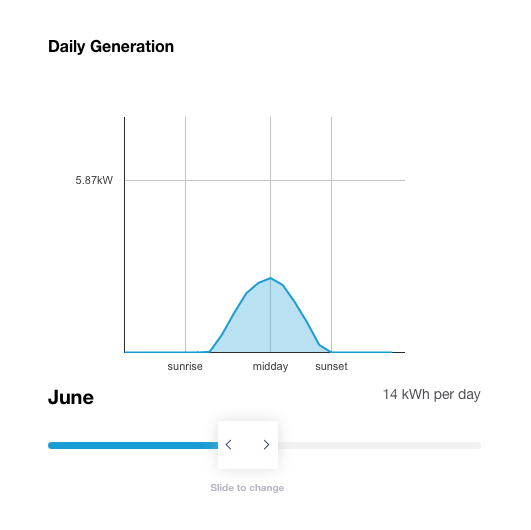
More solar was more important than more batteries in this case.
Nobody has ever complained to me that they installed too much solar, it’s always the opposite.
A big enough solar panel array means that, for any given hour, you can convert whatever sunlight is available into useful energy, especially when the electricity is most valuable at the end of the day. When you have a surplus, the hot water service and/or the electric car charger can be turned on automatically.
Which brings me back to the point. Whether in the long term or a shorter horizon, if you’re thinking about a battery or an EV (a battery with wheels), you generally need surplus solar to charge it cost-effectively.
Batteries Enable More Solar
If you install a solar system with a battery, you can legally install as many panels as the inverter manufacturer allows, which neatly avoids the silly Australian rule limiting systems to 133% oversizing.
Installing 10kW of panels on a 5kW inverter with a DC-coupled battery is not uncommon because you can use any excess power (otherwise clipped at 5kW by the inverter) to charge your battery. This is the fundamental advantage of a hybrid over an AC-coupled battery like the Powerwall.
And That’s Why You Want a Hybrid Inverter
All of this brings me neatly to my final point – that hybrid systems are an excellent option for many, if not most, people.
Batteries aren’t the be-all and end-all. In fact, I have seen a few predictions that once EVs with V2G become common, house batteries will only be bought by homes with special use cases.
If you have legacy solar that works, don’t fret; it doesn’t need to go in the bin if you buy a new hybrid system. A modern hybrid inverter will measure what’s going on, harvest energy from your existing solar (or the grid when electricity is cheap), and offer the ability to offset costs when the price of power triples at 3 pm. Better still, it means you can measure even the dumbest of old inverters.
But the best thing about adding a battery with a hybrid inverter is: it allows you to add more solar.
So what are your options for buying a hybrid inverter battery system?
The answer is you have heaps of options.
A List Of Hybrid Inverters You Can Use As Powerwall Alternatives
This list doesn’t pretend to be comprehensive. With over a thousand units on the CEC-approved list, we can’t cover every permutation. However, every entry on the list is what I see as a more or less viable Powerwall alternative,
Follow the links for a deeper look and some of my thoughts on each option (links will be added over the coming days):
- Selectronic SP Pro (my top pick, robust, reliable, and reassuringly priced)
- Fronius Gen24
- SENEC.Home
- Sungrow SH5K-30
- Sungrow SH5.0RS
- GoodWe GW5000D-ES
- GoodWe GW5000-EH
- GE H5.0-1U-10
- Redback SH5000
- SolarEdge
- Q.cells Q.HOME CORE H5
- Growatt MIN 5000 TL-XH
- Sofar HYD-5000-EP-AU
- Huawei SUN2000-5KTL-L1
- Alpha ESS
Summing Up
As a solar installer in Australia, I can confidently say that hybrid inverters are a viable and often superior alternative to all-in-one battery units like the Powerwall. They streamline your solar setup and enable you to legally add more solar panels, allowing for maximum solar generation.
With numerous hybrid inverter options available in the Australian market, choosing a reputable brand, considering your energy import and export data, and consulting a professional installer are essential.
Footnotes
Original Source: https://www.solarquotes.com.au/blog/powerwall-alternatives-hybrid-inverters/
